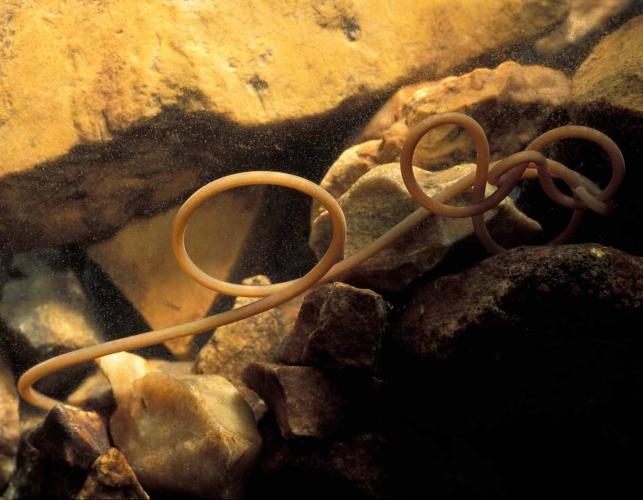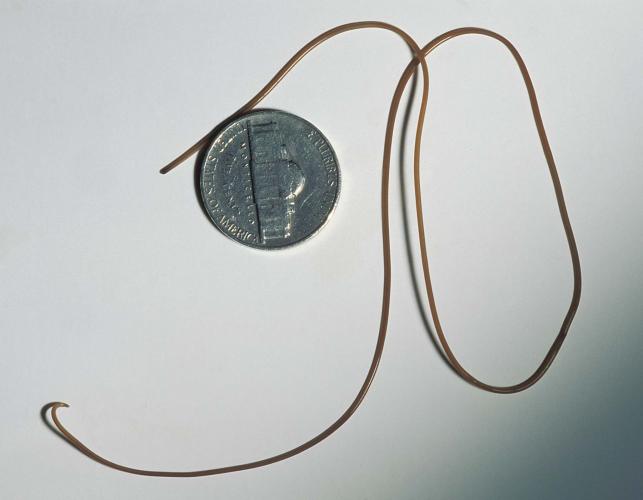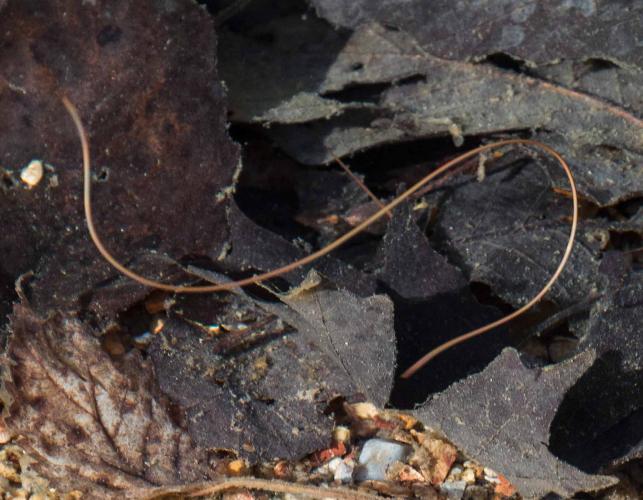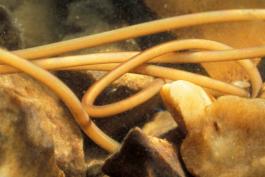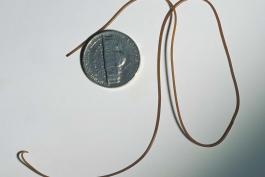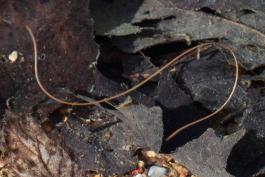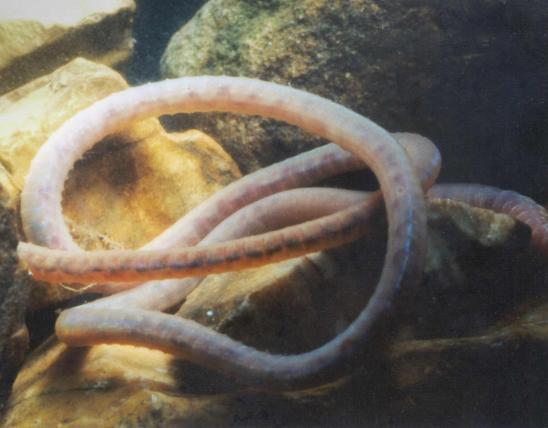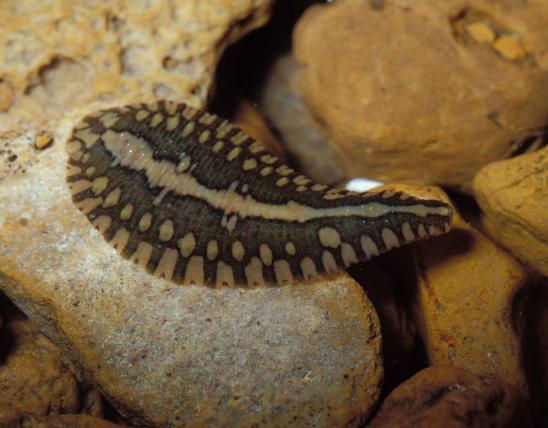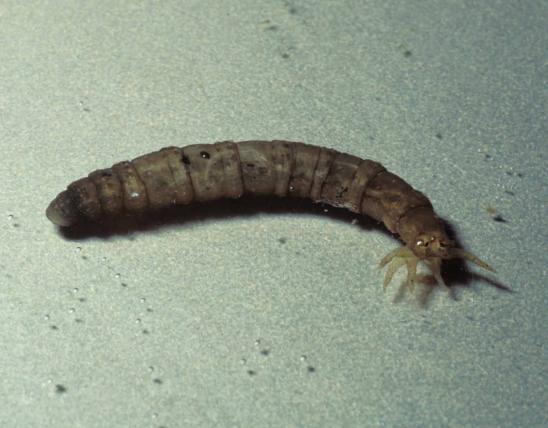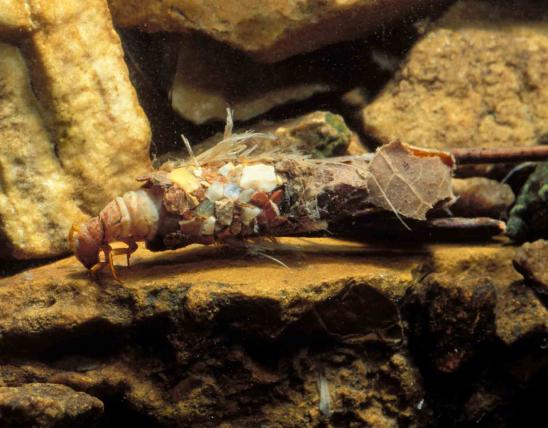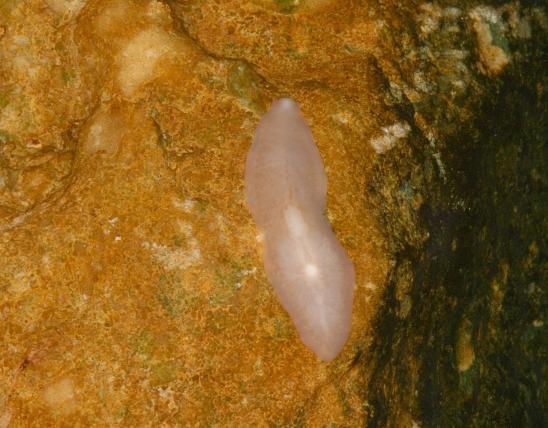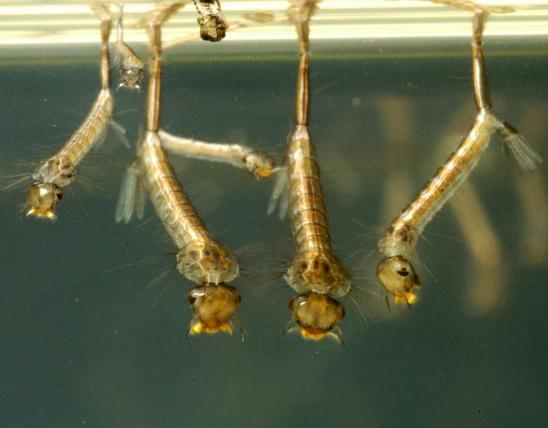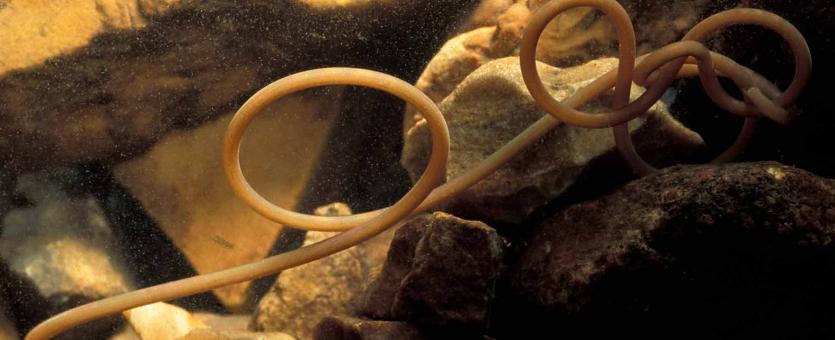
Adult horsehair worms can be up to nearly 2 feet long and live in water. They are practically featureless, smooth, long, thin aquatic worms that writhe into knots and curls. They are not segmented like earthworms or leeches. The bodies are cylindrical in cross-section (not flattened). Both tips of the body are blunt and rounded. The “head” end (calotte) is unpigmented and only slightly set off from the rest of the body; the mouth is at or near this tip. The hind end of the body, in many species, has 2 or 3 lobes surrounding the cloaca (an opening that serves for waste and reproductive purposes). Mating horsehair worms form tight knots, sometimes called Gordian knots after the Greek legend.
Length: usually up to about 40 inches.
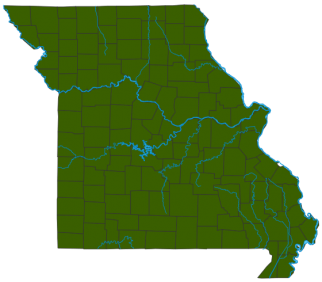
Statewide.
Habitat and Conservation
Closely related to roundworms. Adult horsehair worms are free-living in aquatic environments, but as larvae they are parasitic in the bodies of arthropods (jointed-legged invertebrates, such as insects). In Missouri, people usually see adult freshwater horsehair worms writhing slowly among soaked leaves in puddles, marshes, pools in streams, ponds, and other quiet waters. They may also be found in swimming pools, cisterns, and water dishes and troughs for pets and livestock.
Food
The digestive system of adults is nonfunctional, because at that life stage their goal is reproduction.
The larvae, however, consume nutrients from within the bodies of their hosts, absorbing nutrients right through their skin. Different species of horsehair worms have different preferred hosts, such as crickets, katydids, grasshoppers, beetles, mantises, cockroaches, and aquatic insects.
By the way, the group of horsehair worms that lives in seawater parasitizes crustaceans (crabs, shrimp, etc.).
Status
Horsehair worms are not considered harmful to people, dogs and cats, livestock and other mammals, birds, fish, reptiles, or amphibians, because they do not parasitize vertebrate animals.
An infected cricket, grasshopper, beetle, etc., once wetted, may have horsehair worms emerge from its body, which is why sometimes a pet’s water bowl, a bathtub, or a swimming pool may have a horsehair worm in it.
Although about 350 species of horsehair worms have been scientifically described, scientists estimate there are about 2,000 species globally.
Life Cycle
Groups of mating horsehair worms form tight knots. Females deposit eggs in water in long strings, sometimes up to 8 feet long, each containing up to several million eggs. Sometimes these are squeezed into the water in loose, small sections, like funnel cake batter; sometimes they are adhered onto a stick or other surface in a compact undulating pattern; sometimes they are extruded in free-floating threadlike strands. Males die after mating; females die after egg-laying.
Upon hatching, the rather cylindrical larvae enter their hosts (usually insects). They can do this directly, with the help of barb-like hooks and knife-like stylets, or they can encyst on nearby aquatic vegetation and enter the host’s body by being eaten. Or they can enter an intermediate host (such as the larval form of a aquatic insect) and travel with that insect as it pupates, flies over land, and dies; a cricket, being an omnivore, may eat the dead “transport host,” ingesting the encysted horsehair worm that way.
After ingestion, the cyst “awakens” and the larval worm bores through the gut of the host and enters the body cavity. There, the parasite lives inside the host, absorbing nutrients, molting as it grows.
Once reaching adult size, weeks or months later, it breaks through the body of the host and starts the cycle again.
Some horsehair worms, as they reach adult size, chemically infect the brain of their host (such as a cricket), compelling it to seek water to drink, wet, swim, and/or drown itself: the perfect environment for the adult horsehair worm.
Human Connections
Who needs horror movies? People are shocked and intrigued by many parasites’ life cycles.
The common name of nematomorphs came from the folk belief that they were hairs from a horse’s mane or tail that had somehow come alive — and they do look like that.
Horsehair worms are sometimes called Gordian worms. The term “Gordian knot” refers to a Greek legend involving a hopelessly convoluted knot that had to be untied in order to fulfill a prophecy.
Ecosystem Connections
When subadult horsehair worms take control of their hosts’ brains and direct them to water so they can erupt through their body walls, you could view it as proof that “zombies” really do exist. Or you could marvel at the grim tidiness of this arrangement, wherein the location of the host’s death maximizes the potential for the parasite’s reproductive success. But the likelihood that any one of the several million eggs produced in a clutch will ever find its way into a suitable host is extremely small.
